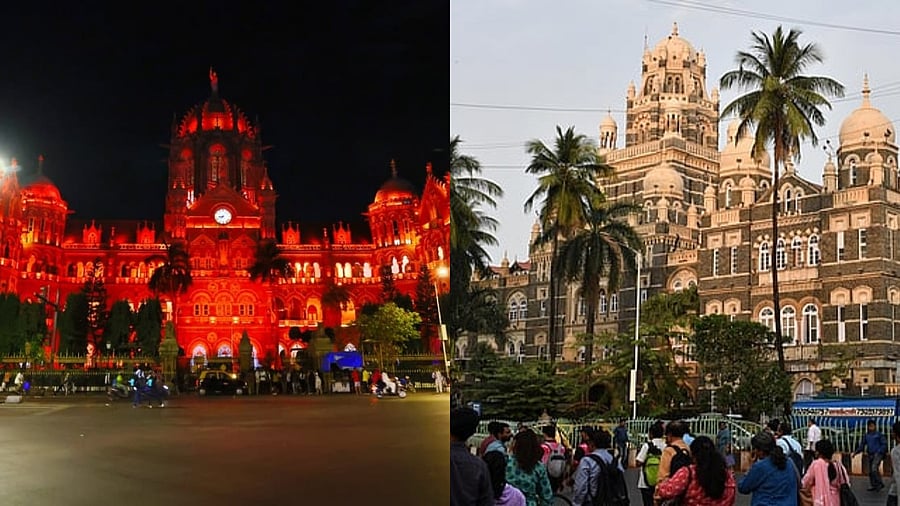
Central Railway and Western Railway headquarters.
Credit: Special arrangement.
Mumbai: They have seen the Independence struggle and fading away of the British Raj, the transformation of Bombay to Mumbai, the evolution of the financial capital of India, the hustle-bustle to people and the deserted look during the pandemic.
Coinciding with World Heritage Day (18 April), the Central Railway (CR) and Western Railway (CR), both headquartered in Mumbai and separated by around a kilometre, celebrated the occasion with heritage walks and talks.
The theme for 2025, as proposed by International Council on Monuments and Sites (ICOMOS), is - ‘Disaster and Conflict Resilient Heritage Actions in Relation to Safeguarding Heritage.’
Besides the iconic Chhatrapati Shivaji Maharaj Terminus, a UNESCO World Heritage Site, which serves as the headquarters of CR and the Western Railway headquarters at Churchgate, the headquarters of WR, along the UNESCO World Heritage Site along the Victorian Gothic and Art Deco Ensembles of Mumbai, were the focal point of the celebrations.
Besides, there were celebrations at Byculla (CR) and Bandra (WR) stations, which are heritage buildings and had its own charm.
To mark the occasion, a special Heritage Exhibition was organized at the Heritage Alley, located between Platforms 14 and 15 at CSMT. The exhibition drew the attention of passengers and history enthusiasts, showcasing rare artefacts and captivating glimpses into the glorious past of Indian Railways.
The CSMT (once known as Victoria Terminus) was beautifully illuminated with multicolored lights. The 138-year-old architectural marvel, designed by British engineer Frederic William Stevens, is a stunning example of Indo-Gothic architecture.The building blends Victorian Gothic Revival style with Mughal and traditional Indian architectural elements, symbolizing India's rich and diverse heritage. The CMST one served as the headquarters of Great Indian Peninsula Railway (GIPR), the precursor of the CR.
The walk highlighted the architectural grandeur of CSMT and celebrated the rich legacy of Indian Railways , people from various walks of life, members of Civil Defence, Scouts & Guides, sanitation workers, and a large number of Railway staff also actively participated in the walk.
Similarly, at the WR headquarters, a heritage walk was organised at the Churchgate Headquarters, for female staff members. The group was guided through the rich legacy of WR and its over a century-old headquarters building.
The iconic Western Railway HQ is a piece of living history. Its construction started way back in 1894 and finished in 1899. The building was designed by Stevens, the same man behind CSMT, Municipal Corporation Building and several other iconic buildings dotting south Mumbai.
It originally housed the headquarters of the Bombay, Baroda and Central India Railway (BB&CI) and still serves as the beating heart of Western Railway today. The building is a blend of Venetian Gothic, Indo-Saracenic, and Italian styles. With blue basalt stone, intricate domes, and a central tower that rises from square to octagonal to dome, it’s sight to behold The interiors are equally captivating, with marble flooring, teak-panelled ceilings and corridors that stretch across three floors.